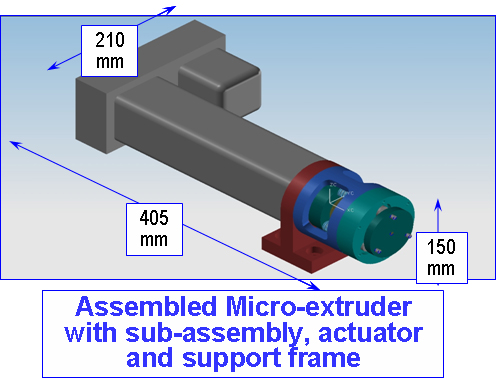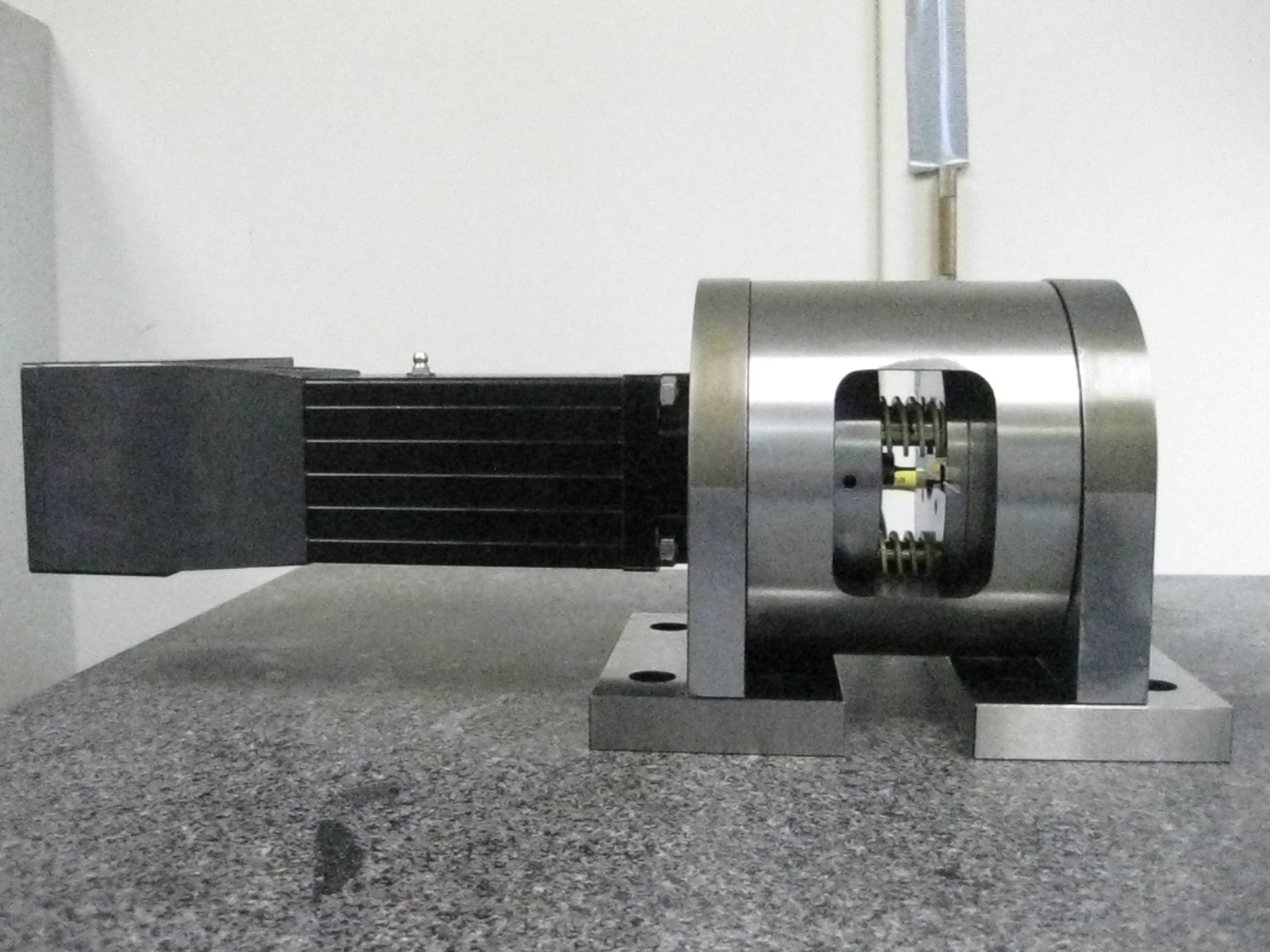The purpose of this project was to investigate the size, strain rate, and tribological effects in the micro-extrusion process. The micro-extrusion machine was developed to conduct micro-extrusion experiments on metals having different grain sizes at various extrusion dimensions and strain rates. The micro-extrusion machine consisted of two main components; actuator and forming assembly. The actuator could provide up to 19kN force, 250mm/s speed, and 30mm stroke length. All parts in the forming assembly were manufactured to the tolerances between 1µm to 5µm. The forming assembly was secured by using the actuator mount and the die base mount, stabilizing the alignment of the entire forming assembly. The proximity sensor was integrated into the forming assembly to precisely determine the home location of the punch. This project was supported by the National Science Foundation and the leadership at Metal Industries Research & Development Centre of Taiwan.
1st Generation Micro-Press
Load capacity: 10 kN
Max. ram speed: 0.18mm/sec
Linear bearing
Cao, J., Krishnan, N., Wang, Z., Lu, H., Liu, W.K., Swanson, A., (2004) "Microforming-Experimental investigation of the extrusion process for micropins and its numerical simulation using RKEM" ASME Journal of Manufacturing Science and Engineering, Vol. 126, pp. 642-652
2nd Generation Micro-Press
Load capacity: 19 kN (up to 100mm/s)
Max. ram speed: 250mm/sec
Electro-mechanical actuator
Ehmann, K., Krishnan, N. and Cao, J. (2006)
Northwestern University: N. Mahayotsanun, K. Ehmann, and J. Cao
Metal Industries Research & Development Centre of Taiwan: T.J. Cheng, Y. Chuang, K.Y. Tu, and H.C. Lee
Nagoya Institute of Technology: K. Dohda (2010)




